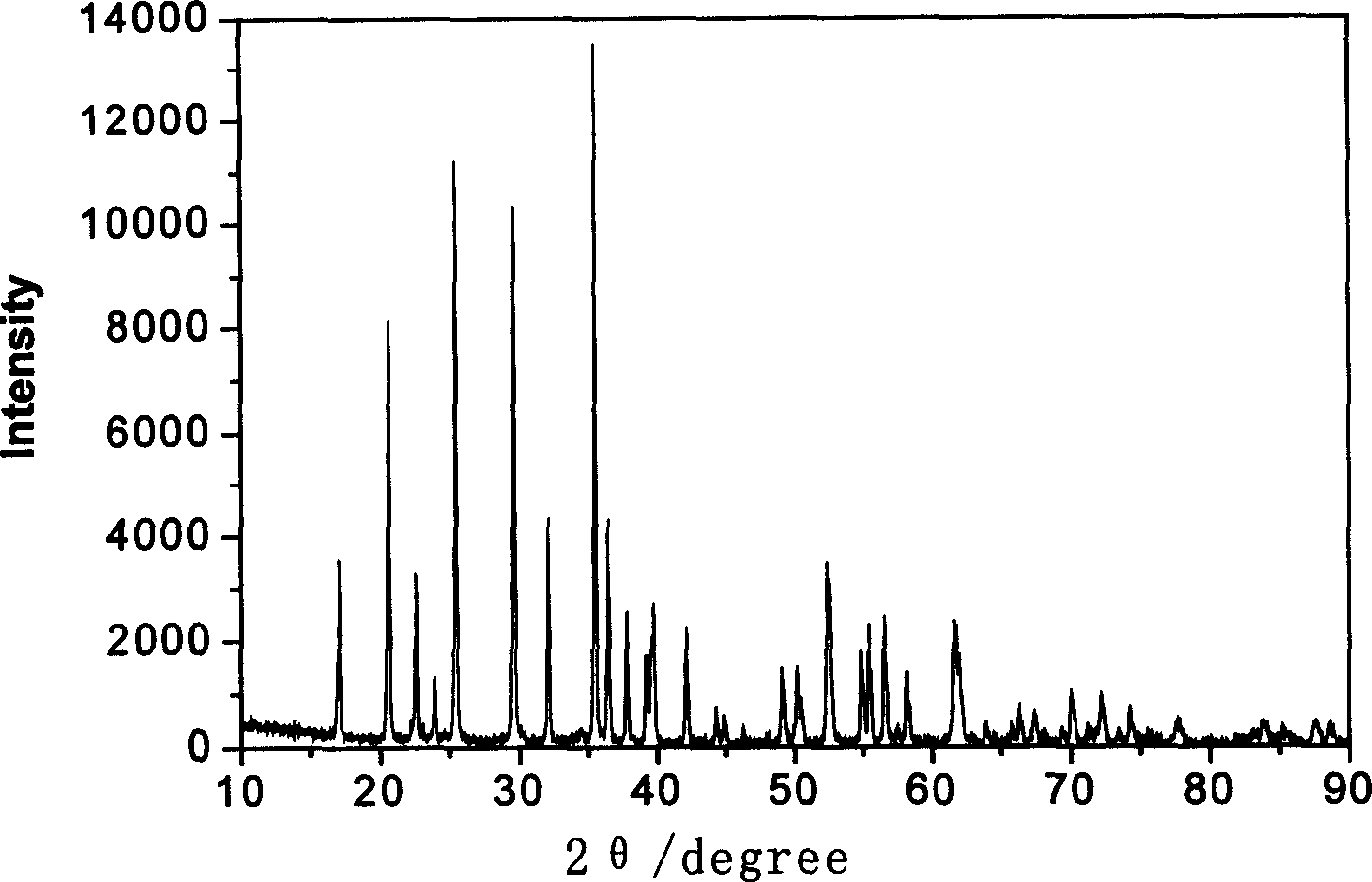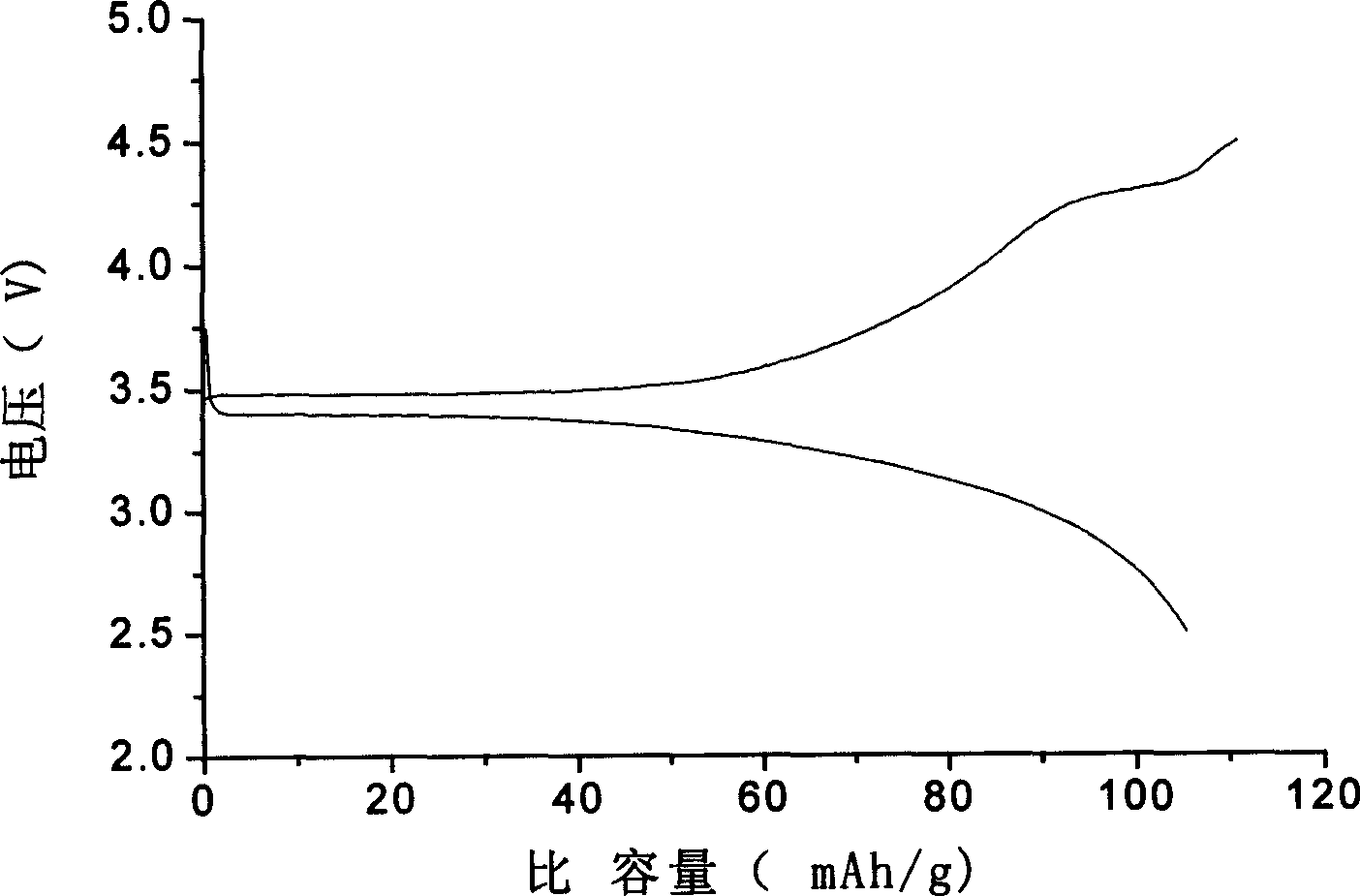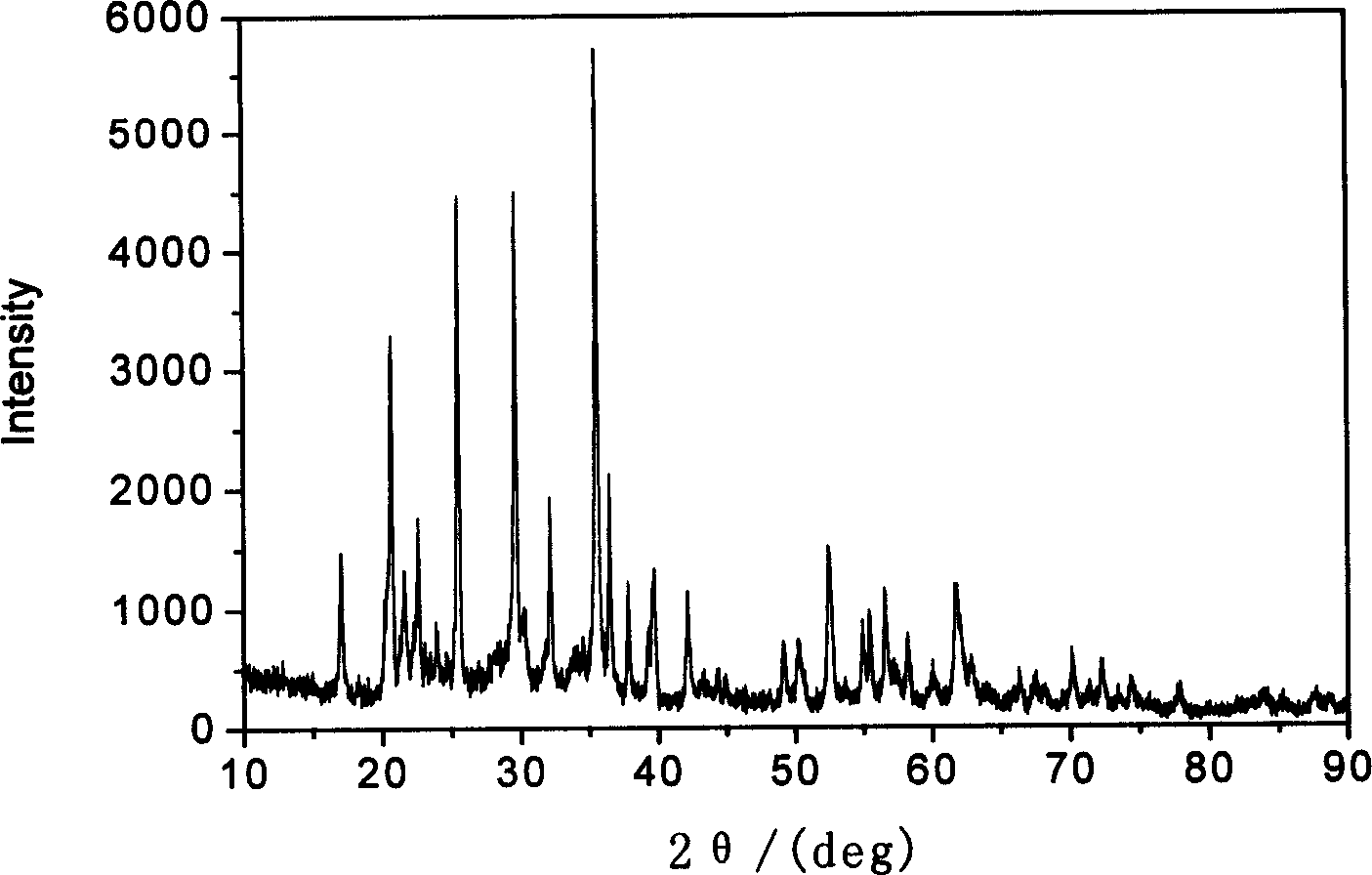Method for preparing LiFeP04 material by microwave method
A microwave method and raw material technology, applied in chemical instruments and methods, electrode manufacturing, inorganic chemistry, etc., can solve the problems of incomplete reduction, large powder particle size, poor high-rate discharge performance, etc., to prevent the growth of grains , short synthesis time, rapid heating effect
- Summary
- Abstract
- Description
- Claims
- Application Information
AI Technical Summary
Problems solved by technology
Method used
Image
Examples
example 1
[0017] The dried material was pressed into tablets, put into an alumina crucible equipped with activated carbon and insulation materials, and then the crucible was placed in a household microwave oven (frequency 2.45 GHz), the power was adjusted to low fire level 3, and the microwave was irradiated for 9 minutes. The phase analysis results of the obtained sample are shown in figure 1 . It can be seen from the XRD pattern that the synthesized product is olivine-type LiFePO 4 , no impurity phase.
[0018] The synthetic material is added with a conductive agent and a binder (20% and 5% respectively) is bonded and pressed to form a film, and a test battery is formed with metal lithium, and a constant current charge and discharge experiment is carried out. The charge and discharge current is 10mA / g, and the charge and discharge voltage range Control between 2.0-4.5V. figure 2 The 12th charge and discharge curve is given, and the specific capacity can reach more than 100mAh / g. ...
example 2
[0020] Press the dry material into tablets, put it into an alumina crucible equipped with activated carbon and heat-insulating materials, then place the crucible in a household microwave oven (frequency 2.45 GHz), adjust the power to the second gear of low heat, and microwave for 9 minutes. The phase analysis results of the obtained sample are shown in image 3 . It can be seen from the XRD pattern that the synthesized product is olivine-type LiFePO 4 , basically no impurity phase.
[0021] The synthetic material is added with a conductive agent and a binder (20% and 5% respectively) is bonded and pressed to form a film, and a test battery is formed with metal lithium, and a constant current charge and discharge experiment is carried out. The charge and discharge current is 10mA / g, and the charge and discharge voltage range Control between 2.5-4.2V. Figure 4 The 2-7 charge and discharge curves are given, and the specific capacity can reach more than 70mAh / g.
example 3
[0023] Press the dry material into tablets, put it into an alumina crucible equipped with activated carbon and insulation materials, then place the crucible in a household microwave oven (frequency 2.45 GHz), adjust the power to medium and low heat, and microwave for 3 minutes. The phase analysis results of the obtained sample are shown in Figure 5 . It can be seen from the XRD pattern that the synthesized product is olivine-type LiFePO 4 , no impurity phase.
PUM
 Login to View More
Login to View More Abstract
Description
Claims
Application Information
 Login to View More
Login to View More - R&D
- Intellectual Property
- Life Sciences
- Materials
- Tech Scout
- Unparalleled Data Quality
- Higher Quality Content
- 60% Fewer Hallucinations
Browse by: Latest US Patents, China's latest patents, Technical Efficacy Thesaurus, Application Domain, Technology Topic, Popular Technical Reports.
© 2025 PatSnap. All rights reserved.Legal|Privacy policy|Modern Slavery Act Transparency Statement|Sitemap|About US| Contact US: help@patsnap.com



